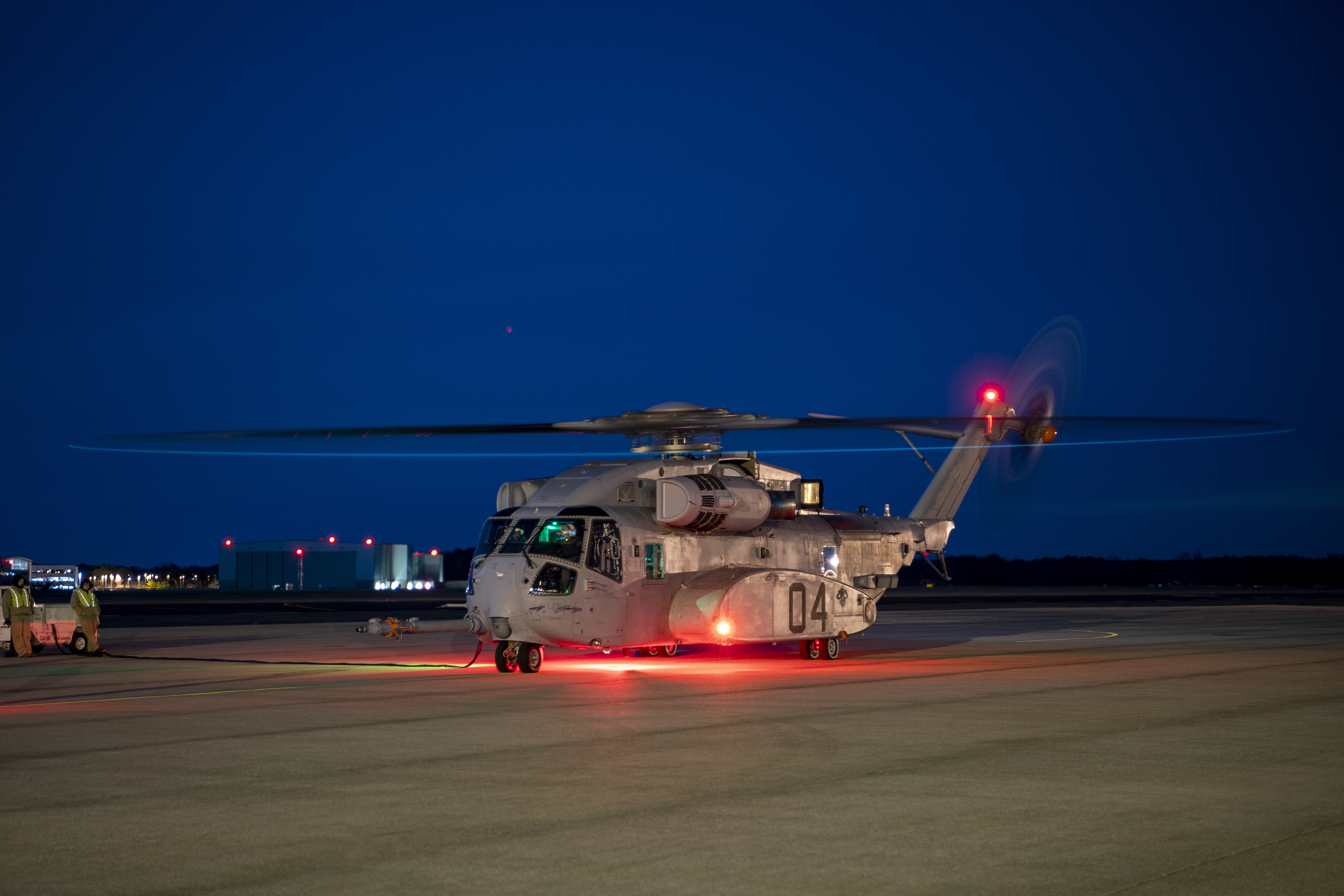CH-53K: The Advantages of a “Smart Aircraft” and Sustainment
Next generation air platforms encompass several changes as compared to the predecessors which are at least thirty years old or older, notably in terms of design.
Next generation air platforms are designed from the ground up with the digital age as a key reality.
This means that such systems are focused on being able:
- To provide connectivity with other platforms,
- To have upgradeability built in through software enablement and anticipated code rewriting as operational experience is gained,
- Operating with cockpits built to work with new digital ISR and C2 systems onboard or integrateable within the cockpit of the platform,
- Are built with materials technology, which leverages the composite revolution,
- And have management systems designed to work with big data to provide for more rapid and cost effective upgradeability and maintainability.
Such is the case with the CH-53K compared to its legacy ancestor, the CH-53E or with the venerable but legacy Chinook medium lift helicopter.
Comparing the legacy with the next generation is really about comparing historically designed aircraft to 21st century designed and manufactured aircraft.
As elegant as the automobiles of the 1950s clearly are, from a systems point of view, they pale in comparison to 2020s automobiles in terms of sustainability and effective performance parameters.
What is more difficult to grasp is how the new generation of aircraft also change how sustainability is managed and how the new aircraft provide a ramp launching a new way to manage the aircraft, and to provide for enhanced reliability for those digitally managed aircraft.
Recently, I had a chance to talk with Pierre Garant, now a program director with Sikorsky, but whom I met many years ago when he was the aviation sustainment director at Headquarters Marine Corps. The simple point is that Garant has been at this for a long time. What he brings to the CH-53E and CH-53K is years of credible experience in working 21st century transformation regarding combat logistics.
What Garant argued was that by establishing an effective PBL process in place, which Sikorsky has with both the Seahawk and now with the CH-53E, they can now with the new digital aircraft embed those tools into a PBL framework.
With the PBL framework there is solid working relationship between the government and Sikorsky to better manage the supply chain and to shape more accurate data with regard to parts performance while already setting the foundation for a CH-53K PBL.
They can then take that data and rework how the supply chain can deliver a more effective outcome to reliability and effectiveness in operations.
With the data generated by the CH-53K, the “smart” aircraft becomes a participant in providing inputs to a more effective situational awareness to the real performance of the aircraft in operational conditions.
Then that data then seamlessly flows into the sustainment management system to provide a much more realistic understanding of parts performance.
This then allows the maintenance technicians and managers to provide higher levels of performance and readiness than without the data flowing from the aircraft itself.
Put in other terms, the data which the aircraft generates makes the aircraft itself an “intellectual” participant in the sustainment eco system.
The question then is how best to operate such an ecosystem?
This is a different question than the legacy aircraft and its sustainment system poses.
There the question is determining laws of averages for parts performance from collecting data, and then shaping ways to make sure parts are available at the right time and the right place.
With the aircraft as a participant in the fully-integrated eco system, much more performance is being provided in a much more timely fashion and the question then is how to work the suppliers into the eco system so that they can be informed significantly earlier about what they need to do to contribute more effectively to the fleet.
Another dimension of how the aircraft contributes to its own enhanced reliability is its ability to provide information with regard to fault isolation.
With the digital systems onboard the CH-53K, the aircraft not only generates fault detection, but can precisely isolate where that fault is to be found with accuracy.
This can eliminate false replacements, a problem which the Osprey had for many years in its initial operations.
High reliability of fault detection and fault isolation is a significant game changer for maintenance, and it is the aircraft that will generate the information for this more effective process.
Furthermore, the digital aircraft delivers a tenfold increase of actionable information that fully enables condition-based maintenance as a future reality.
Garant noted the nature of the shift as follows: “The shift is from reactive maintenance to predictive maintenance.”
And the data flows will enable a continuous learning process which can be shaped for the global fleet of the aircraft, rather than being simply being done well at one base and only word of mouth spreading the message on a new way to maintain the aircraft.
As Garant put it: “It’s almost like virtual surgeon, where his knowledge comes to the point of need.”
With all the noise about autonomous systems and AI, what one can overlook is how digital aircraft are now participants in their own maintainability.
Try that with a legacy Chinook or CH‑53E.
In short, the CH-53K is a smart aircraft birthed in a digital age that is doing support and manufacturing differently.
In other words, it’s symmetrical with a significant strategic change, rather than being a legacy system struggling to adapt to the new age.
Featured Photo: A CH-53K test aircraft prepares for a night flight test at NAS Patuxent River, MD on 9 Jan 2020.

